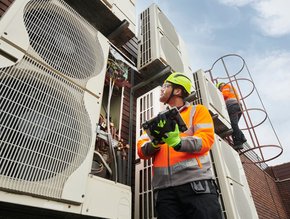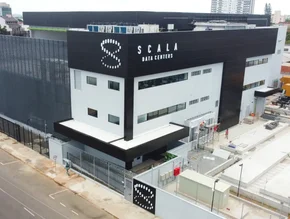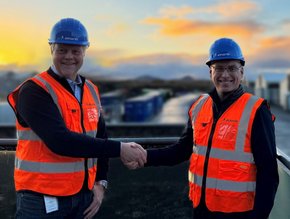Data centers: Driving renewables and environmental solutions

Why has the data centre sector become one of the world’s fastest-advancing industries? And how can an argument be made that they are, in fact, a major driving force in the energy transition to renewables?
Firstly, it boils down to the growth of the sector. Internet users have increased by 60%, and internet traffic by 440% between 2015 and 2021, according to IEA data. But even though data centre workload increased 260% in the same time period, global data centre energy use has stayed somewhat stable, seeing only a 10% increase.
Decoupling service demand from energy
“This decoupling of energy usage from service demand is hugely significant,” Ciaran Flanagan, VP and Global Head of Siemens Data Center Solutions explains. “It’s being driven by rapid innovation of digital technology in data centres, allowing the industry to offset huge increases in demand with improved infrastructure efficiency. In short, we are building more and more digital capacity, modernising legacy infrastructure and meeting the growth, but in real terms we’re not using much more energy than we were five years ago.”

The real challenge here, he adds, is how we limit the environmental impact of global internet use. “We should be honest; there is an impact, there always will be and we need to continue to use technology and commercial innovation to mitigate it.”
When it comes to data centre lifecycles, more than 85% of the carbon impact comes from operations. “There is also certainly an impact during construction and it’s also significant - certainly worthy of mitigation - but net-zero construction will not address the larger part of the challenge: the carbon impact of running the facility for 20 years or more,” Flanagan continues.
Driving the energy transition
The data centre industry is a major buyer of PPA agreements for renewable energy, which has a significant impact on the energy mix. In 2021, Amazon and Microsoft were the two largest corporate buyers of renewable energy through PPA.

“To a degree, the data centre industry is helping to drive decarbonisation by underwriting a significant proportion of grid-scale, carbon-free energy for industry,” Flanagan adds. “This can catalyse a whole ecosystem at a national level, and also demonstrates to the broader industrial base that critical loads can reliably move to renewables.”
Beyond carbon reduction
“The quest for efficiency is as important as ever, and the discipline of energy management has a massive effect on the operational impact of a data centre,” Flanagan stresses. “Innovation in technology for managing environmental conditions inside a data centre is having a significant impact on energy consumption. We know that 20% to 40% of a data centre’s energy use can go towards cooling and ventilation, and this mechanical load is a prime area for optimisation through technology.”
Siemens’ white space cooling optimisation solution, for example, employs an advanced machine-learning model which examines the impact of cooling on specific areas of a facility, which produces an influence map to strip energy use to essential levels.
“AI engines like this can make a significant difference to a data centre’s energy costs; it’s one of the reasons the new Greenergy data centre in Estonia is the most energy efficient in the Baltic region,” Flanagan adds.
The future?
Flanagan states that although digitalisation and the rise of internet access have delivered significant benefits to humanity, we should be humble in acknowledging the sustainability sacrifice that has come with it. “Our mission now is to continually and steadily drive that impact toward zero,” he stresses. “The data centre industry has led by example by willingly investing in decarbonisation, and has demonstrated that an ecosystem of technology companies can work together to measure, manage and fundamentally change an industry’s approach to energy through innovation. We must continue this pace of investment and innovation if we are to deliver the lowest possible impact of our digital lives on the environment.”
This article is an advertorial and monetary payment was received from Siemens. It has gone through editorial control and passed the assessment for being informative.






